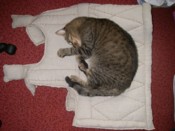Gender and Rulership in the Medieval German Empire
By Amalie Fößel
History Compass, Vol.7:1 (2009)
Abstract: This article discusses queens’ and empresses’ powers, and the changing scope of their activities, in the Medieval German Empire. As a consors regni and partner in politics, queens and empresses played prominent roles in public life and influenced political decisions in the tenth, eleventh and twelfth centuries. Then, in the course of subsequent centuries, the idea of the queens’ partnership in ruling the realm increasingly disappeared. Some of their duties lapsed, while other responsibilities were taken over by the nobility. Queens could still participate in decision making by influencing the King, but more and more they had to carve out a sphere of action for and by themselves. By the later Middle Ages, queens held political power and exercised rulership in the royal family’s hereditary territories, but not in the Empire as a whole.
Introduction: The medieval German Empire could be described as a society that functioned by networking. Thus, the consortium of the queen as a partner in governing became one of the most formative elements of the political culture. Based on a wide public consensus, queens played a prominent part in public life and participated in power and political affairs. Therefore, they were called consors regni. However, in the course of the Middle Ages, the queen’s partnership in ruling the realm was subject to constant modification. The idea of the consors regni disappeared in stages until, in the political reality of the later Middle Ages, it vanished. Some duties of the high medieval queens lapsed, while other responsibilities were taken over by the nobility. In modern scholarship, this development has often been described as ‘a loss of power’. The formula ‘koenigs husfrouwe’ (housewife of the king) seems to confirm this assessment. The term itself emerges in German charters from the fourteenth century, indicating that the queen was, by that point, mainly regarded as a wife and mother.
These general observations raise a few questions:
1. What was the queen’s sphere of influence in the high Middle Ages? How did she exercise power?
2. When did the ‘loss of power’ start? What were the reasons for this development?
3. What role did the Roman-German queens play in the late Middle Ages? Is it justified to say that queens became ‘powerless’, and that the status of a queen was no longer important?
http://www3.interscience.wiley.com/cgi- ... 1&SRETRY=0
Gender and Rulership in the Medieval German Empire
Modérateur : L'équipe des gentils modos
Grég le furet
56
Miles britto-romain an 5OO.
Letavia <a href="http://letavia.canalblog.com/" target="_blank">http://letavia.canalblog.com/</a>
56
Miles britto-romain an 5OO.
Letavia <a href="http://letavia.canalblog.com/" target="_blank">http://letavia.canalblog.com/</a>

